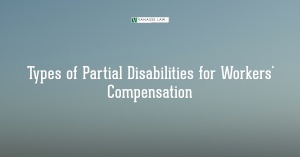Need Immediate help? Call 717-397-1010
After Hours Call / Text 717-471-2168
Need Immediate help? Call 717-397-1010
After Hours Call / Text 717-471-2168

Workers’ compensation is a no-fault insurance policy that ensures that employees who are injured or made sick on the job receive compensation for their medical care, as well as for the wages that they may lose as a result of their medical condition. In some cases, an employee’s injury may preclude them from being able to return to their original work responsibilities, but they may be able to take on another role at the same company. When this happens and the wages for the new role are lower than what the employee was originally received, the employee may be eligible to receive a benefit known as “partial disability”. Partial disability is frequently part of an order by a judge or an agreement that has been reached as part of an injured worker’s agreement with their employer. For assistance with filing for partial disability or to make sure that you receive the amount that you deserve, contact the Lancaster law firm of Vanasse Law today.
Partial disability benefits are not offered permanently. The amount of time that an injured worker is able to receive them is limited to a maximum of 500 weeks. It is important to know that this time period does not need to be uninterrupted: the payments can go on for a period of time longer than the nearly ten years that 500 weeks would represent if they were taken consecutively. Partial disability is designed to help make up for the loss of earning capacity caused by the injury or illness that took place on the job. It is calculated at a rate of 2/3 of the difference between the employee’s original average weekly wage and the wage that they will be paid for their new role.
In addition to those benefits, there are other specific payments that can be provided to employees based on the type of injury that they have suffered on the job. These include:
For assistance in applying for any of these types of workers’ compensation benefits or for help in filing a claim, contact the Pennsylvania law firm of Vanasse Law today.